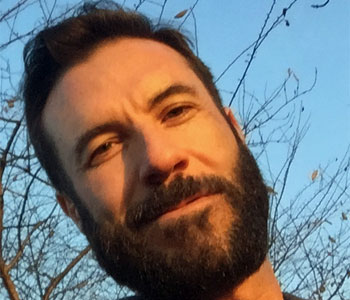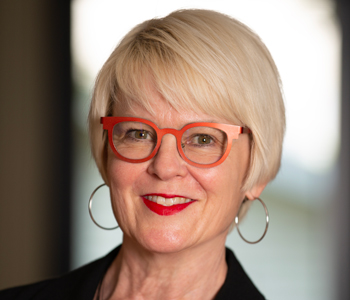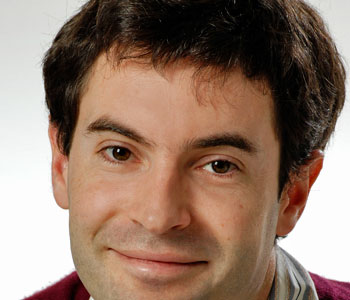Lauren Berlant
Cruel Optimism
Duke University Press
352 pages, 6 x 9 inches
978 0822350972 hb
978 0822351115 pb
Cruel Optimismis a book about living within crisis, and about the destruction of our collective genres of what a “life” is; it is about dramas of adjustment to the pressures that wear people out in the everyday and the longue durée; it is about the blow of discovering that the world can no longer sustain one’s organizing fantasies of the good life.
I’ll focus here on three matters. The first is the concept of cruel optimism (what’s optimism, what’s cruel about it). The second is on a particular scene—the end of the postwar good life fantasy and the rise of neoliberalism in the U.S. and Europe—in which the consequences of cruel optimism are lived collectively. The third is about the need for a realism that embeds trauma and suffering in the ordinary rather than in a space of exception, given that the crises of exhaustion and knowing how to live are problems saturating ordinary life.
I define “cruel optimism” as a kind of relation in which one depends on objects that block the very thriving that motivates our attachment in the first place.
All attachment is optimistic. But what makes it cruel is different than what makes something merely disappointing. When your pen breaks, you don’t think, “This is the end of writing.” But if a relation in which you’ve invested fantasies of your own coherence and potential breaks down, the world itself feels endangered.
A destructive love affair is my favorite example: if I leave you I am not only leaving you (which would be a good thing if your love destroys my confidence) but also I leaving an anchor for my optimism about life (which is why I want to stay with you even though I’m unhappy, because I am afraid of losing the scene of my fantasy itself).
So this double bind produces conflicts in how to proceed, because massive loss is inevitable if you stay or if you go.
Cruel Optimism asks: Why is it so hard to leave those forms of life that don’t work? Why is it that, when precariousness is spread throughout the world, people fear giving up on the institutions that have worn out their confidence in living?
This is why I am interested in seeing optimism operate in all kinds of attachment: from intimacy and sexuality to things like voting, or the belief that capitalism is a meritocracy that rewards active competence.
In all of these scenes of “the good life,” the object that you thought would bring happiness becomes an object that deteriorates the conditions for happiness. But its presence represents the possibility of happiness as such. And so losing the bad object might be deemed worse than being destroyed by it. That’s a relation of cruel optimism.
My big question is: Why do people stay with lives, forms, and fantasies of life that don’t work?
How do we learn to associate certain things with our fantasies of the good life? Shouldn’t there be more and better forms of life to attach to? What makes so many people desperate to live conventionally rather than experimentally, when the prevailing norms generate so much noise and evidence of their failure to sustain life? How do conventional ideas of the good life get implanted in our viscera, and how do we go about enabling changes in our visceral understanding of our objects and our potential flourishing?
So I think of Cruel Optimism fundamentally as a book about affect and unconscious fantasies in relation to ideologies of the good life that were made available for optimism in the post-war economic bubble. I am therefore interested in practices of democracy, labor, love and intimacy that sustain and diminish us at the same time.
A number of kinds of studying provide the context for this work. I’ll focus on three here: Marxist critical theory, queer theory, and critical theory in the Frankfurt School tradition that, to explain personal and collective desire, uses resources from psychoanalysis, philosophy, and mass society theory and phenomenologies of embodied existence via feminism, trauma studies, etc.
Elliptically, then: my training as an affect theorist really derived from Marxist critical theory, from Raymond Williams through Georg Lukács and Fredric Jameson, especially: and then reading Frantz Fanon blew my mind.
Most people think of Marxism as antithetical to any sensitivity to affect, as a mode of analysis focusing on capitalist processes of value extraction and exploitation. At the same time, though, Marxist thought has also provided a powerful account of fantasy: of how our senses and intuitions are transformed in relation to property, to labor, to presumptions about being deserving, and to enjoying the world.
The theorists I responded to see art as a place that clarifies the subjective and visceral aspects of structural social relations. We read artworks as a space where a variety of forces converge and become visible, including the fantasy resolutions we make to be able to live within contradiction. Fanon wrote about the ways bodies and minds under colonialism were “colonized”—broken and formed by having to find their ways in life amidst negating images and potentially defeating contradictions of power.
So I learned from the start to think that distinctions like public/private, impersonal/personal, structure/agency were false representations of how the world works. Feminism’s “personal is political” helped too, to develop a way of thinking that sees power infusing our very gestures and fantasies, our attachments to others as well as to our labor and our connection to the world.
Queer theory was a crucial development in this process. For those readers who are unfamiliar, queer theory is not a program for claiming that non-heterosexual identities are cooler, better, richer, or deserve special accommodations.
The point is double: to seek to open up understanding the relation between conventional patterns of desire and the way they are managed by norms, and to focus on patterns of attachment we hadn’t even yet known to notice, patterns in which sexuality and intimacy are enacted in a broad field of social relations that anchor us to life. Being a friend, a regular, a neighbor, a part-time lover, an ex-lover, an intimate; being gender dysphoric, or just plain gay or straight—all of it is seen as an effect of many causes and a complex, intimate practice of world-building. Its theorists include Judith Butler, Michael Warner, Eve Sedgwick, Gayle Rubin, Jack Halberstam, Elspeth Probyn, Jose Muñoz, Jasbir Puar, and many others.
Another way to encapsulate this is that queer theory sees sexuality as a process rather than a foreclosing identity. This meant that one constantly has to be attending to the action and development of one’s patterns of attachment. What is this object of desire standing for? A straight woman, for example, doesn’t want all men, just some: so why not rethink sexuality as the history of a patterning or style that develops over time, in relation to law, norms, and the accidents and incidents of ordinary life?
I came to all this working interdisciplinarily: across fields from anthropology, European sociology, psychoanalysis, deconstruction, and aesthetics; and also from feminist and queer activism.
All of this is background knowledge in Cruel Optimism: elaborating it is not its focus.
Sometimes a book like mine makes people feel that, if they don’t know the films or novels or cases written about, they can’t read a given chapter or judge its claims.
This is a theoretical book, but it floats its ideas by way of processes that are everywhere around us—processes of dependency, labor, fantasy, and intimacy—and then it uses political and aesthetic cases to exemplify their impacts.
I hope my storytelling is good enough that you can imagine the scene or situation that compels thought: often people read my work slowly and dreamily and puzzle over things.
I aim for the scene I’m describing to open up a question for you. If the questions become more vital and interesting in the reading, then I’ve done my job. If readers then encounter these questions in the world, they might have a different way to think and act in relation to them.
Changing the dynamic within relation might actually change things significantly, that’s my hope about the impact of a way of seeing world-building. We live in an emotionally charged time: seeing how the work of relational emotion shapes our very sinews might clarify a lot about what’s going on, what’s stuck, and what’s possible.
One example of the book’s challenge is its discussion of “normativity.” Some people think of norms and conventions as the unfair discipline of free people’s desires or as unimaginative clichés. Often norms are, and often conventions reduce complexity to simplicity. At the same time, though, norms and conventions are not maps toward an easy way of life: they’re aspirational anchors: especially for so many people whose tethers to the world are loose or unreliable.
Plus, the book argues that objects of desire are placeholders for a desire to more-than-survive. Being hooked to a norm or a convention is also an attempt to maintain a stable enough orientation so that life might be moved through flourishingly. See pp. 166-169, for example, the Rosetta chapter, although the whole chapter is about this, as are many others.
How to interrupt one’s reliance on toxic norms? The Two Girls, Fat and Thin chapter and the Intuitionists chapter engage how habits are formed and relied on and interrupted (through food, through conversation, through cruising, and so on).
Another thing I learned from the book is to think about optimism as noisy and often unbearable. The intro, the title chapter, and the final chapter on “Desire for the Political” are about art and political techniques of bearing optimism, and also about the racial, sexual, and economic distribution of affects of belonging.
For people not so art-inclined, the “Slow Death” chapter works through the obesity epidemic in terms of sovereignty and responsibility. How much does the pressure of contemporary capitalist working life put pressure on the small pleasures to sustain our survival? What is the relation between physical health and mental health in the process of moving through life?
Many people read my books to find a language for the affective dimensions of structural inequality: in Cruel Optimism this is performed as a crisis in optimism about the prospects of living on.
I am actually pretty lame at imagining a repaired world. What I provide best are depictions of what makes people stuck in the face of the ordinary pulsations of a fraying crisis. People have called the book the affective register of the 99%: and I think there’s something to that, as I am looking for what Raymond Williams called the “structure of feeling” of the historical present that that moves across individual, collective, and political life.
So Cruel Optimism tracks the rise of a precarious public sphere. It sees the world as in an impasse and a situation beyond the normative good life structures, where people have a hard time imagining a genre that makes sense of life while they’re in the middle of it. I’m saying that intense personal emotions about the shape and fraying of life are also collective, and have to do with an economic crisis meeting up with a crisis in the reproduction of fantasy. I talk about this as a waning of the “good life” genres.
These concepts matter to me because I want better objects for better optimism (there’s a slogan!). But to achieve this we need to move our analyses of the historical present into the exploratory mode that crisis, regardless, forces us to occupy. This is not a time for assurance but for experiment—to have patience with failure, with trying things out, to try new forms of life that also might not work—which doesn’t make them worse than what’s there now. It is a time for using the impasse that we’re in to learn something about how to imagine better economies of intimacy and labor.
Capitalist crisis has tightened up the time of the world: all over, people are in sync in their sense of contingency and social fragility, even if they might have wildly different accounts of it. Sometimes this recognition is unbearable and produces violence: because we know the change and the loss has already happened, and yet it is unbelievable and unbearable, while being borne. Cruel Optimism attempts to chronicle the dramas of adjustment—the dramas of consciousness and of mediated life—that force into being new recognitions of what a life is and ought to be.




We don't put paywalls. We don't distract you with ads. We don't sell your data.
Please help to keep this running!